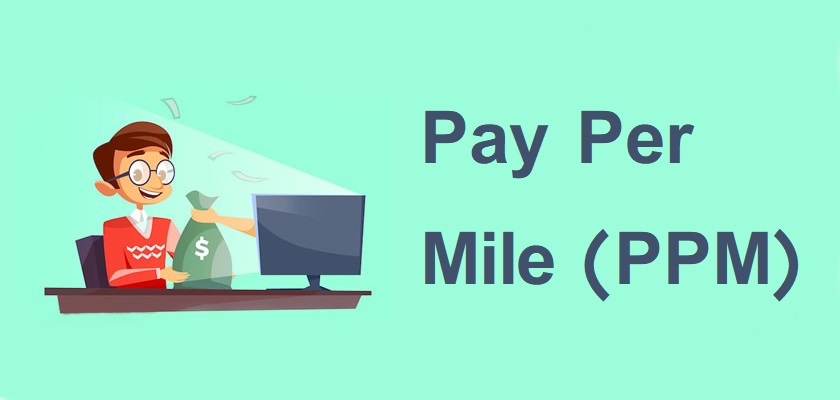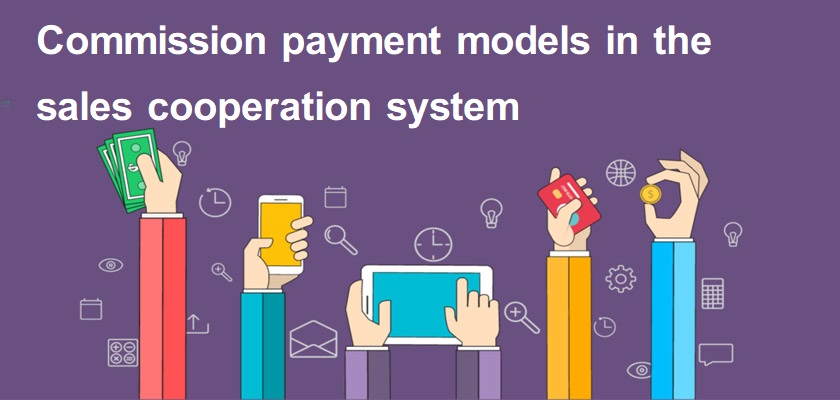Commission payment models in the sales cooperation system
There are several types of online marketing models, including commission payment or pricing models. What is common for a sales affiliate (affiliate marketing) system is that the commission is paid for the action taken, ie if the publisher succeeds in converting visitors, the commission is paid according to the agreed model. Of course, there is always the risk of not being able to convert visitors, in which case the publisher will not receive a fee.
One of the main things that a brand owner and a publisher have to agree on is the payment model they use. Brand owners usually offer a commission payment model for their sales collaboration system, but some may offer several models. Certainly a publisher chooses the model that is most likely to be efficient and has the highest profit. For brand owners, the choice of commission payment model is determined by the type of conversions they want to obtain through the sales cooperation program.
In the following, we will become more familiar with the various common commission payment models and what they come with.
Pay Per Sale (PPS)
This is the most common commission payment model. In fact, some studies indicate that more than 80% of online sales collaboration systems use the PPS commission model.
A sales collaboration system in this payment model focuses on increasing sales through affiliate links. The process is such that each publisher has an affiliate link that includes a product or service. The publisher links directly to the product page on the brand owner’s website, from which the user can purchase the product. Clicks on the actual buy and sell button are recorded by cookies, even a few days after the main click on the link. After the full sale, the publisher receives a percentage of the sale based on the commission payment model agreed with the brand owner.
This is a type of commission payment commission based on revenue sharing that is also very popular. Brand owners do not incur any additional costs before the sale is complete, but instead, the proceeds from the sale are shared with the publisher.
Pay Per Action (PPA)
Even if this method is less popular than the previous method, it still surpasses all commission payment models in the sales cooperation system. Using the payment method for each action, brand owners pay a commission to the publishers for each visitor who takes the action. This can be creating an account, subscribing to a newsletter, downloading an e-book, filling out a form, and more. Basically, any action that is valuable to a brand owner can be considered for advertising by publishers. The best way to get publishers paid is to send targeted traffic, ie online visitors who are more likely to take action.
This model of commission payment is also known as per capita payment, payment per purchase or payment per conversion.
Brand owners are likely to incur additional costs when using this commission payment model. Unlike the previous method, in which revenue is generated and then distributed, with PPA there is no direct revenue for the brand owner at that time.
For example, if directing a user to the main site is a goal that the brand owner wants to achieve, he or she will pay a fixed commission to the publisher, and a publisher like PPS cannot have a percentage of revenue because the goal was not to sell. Since there is no revenue at the time of conversion, brand owners must allocate a commission to pay commissions to publishers who participate in these types of sales collaboration systems.
Pay-per-action includes two distinct types of commission payment models. These include:
Payment per call
Just like tracking clicks, calls can be tracked using connection technology. Some brand owners have a call click service that allows users to quickly click a button and communicate with the brand owner, regardless of whether it is through a representative, customer service, etc. This feature is especially useful for mobile users, and is becoming more and more popular every year.
Payment per installation
Another way that brand owners can promote their business and increase the amount of advertising is to encourage them to install their programs. In this case, the publisher uses the affiliate link to introduce and encourage online users to install the program. The publisher will be paid a commission for each installation, as this is the brand owner’s choice.
Pay Per Click (PPC)

This commission payment model is a payment model that is common for search engine marketing (SEM), but it can also be used in a sales collaboration system. The idea behind this model is that one click on the link is considered as the desired action. Each time the user clicks on that link, this action helps the publisher and a fee is issued by the brand owner.
In this commission payment model, it does not matter how many times the link is displayed and what happens after the click (whether the user buys, registers, downloads, etc.) everything is just about clicks.
Like paying for each action, there is no direct revenue for the brand owner in this model, which means that brand owners take the risk of converting visitors after clicking.
Pay Per Mile (PPM)

Pay-per-mile or pay-per-thousand reviews in the sales collaboration system are not very popular, but some brand owners offer this option through affiliate networks. In fact, it is another payment model that is more related to search engine marketing. This concept includes payment based on a thousand hits.
Based on the concepts of commission payment models so far, it is obvious that brand owners have the most benefits in the first model (pay per sale) because there is no investment or risk of losing capital and not achieving conversion. This is the safest way for brand owners. For publishers, this can be a challenge, but if they succeed in using their online influence and getting the right referrals, they have a chance to successfully convert visitors and get commission with either of these models.
Invalid transactions in the sales cooperation system

Publishers get a percentage of sales, which means that their fees are paid at the time of sale. However, there are circumstances in which the transaction is void and the publishers are unable to claim their profits. For example, if the sale is canceled or the product is returned, no fee will be charged to the publisher if the payment-for-sale model is used.
That is why it is important to understand the concepts of valid and invalid transactions and how each of them affects the competence of the Commission.
To ensure that the transaction is properly arranged, the brand owner must clearly define what the transaction is valid for and when the transaction becomes valid.
There are several situations where the transaction is invalid, in which case the publisher is not eligible for the commission. Some of the reasons for the cancellation of the transaction include the following:
- Non-verification of payment authorization (due to expiration date, payment cannot be processed, credit card or low balance)
- Order canceled
- Duplicate order
- Returned product
- Fraudulent sales
- Unauthorized lead (for PPL commission payment model)
Brand owners are advised to clearly explain and inform publishers about the terms of invalid and invalid transactions to avoid commission payment problems.
Conclusion
Payments and transactions are an important part of the sales collaboration system, which is why brand owners are advised to consider all the conditions that can occur when making a transaction. This not only validates the sales collaboration system, but also makes it very easy to manage and monitor the program. Publishers, on the other hand, need to carefully consider the conditions before joining.













